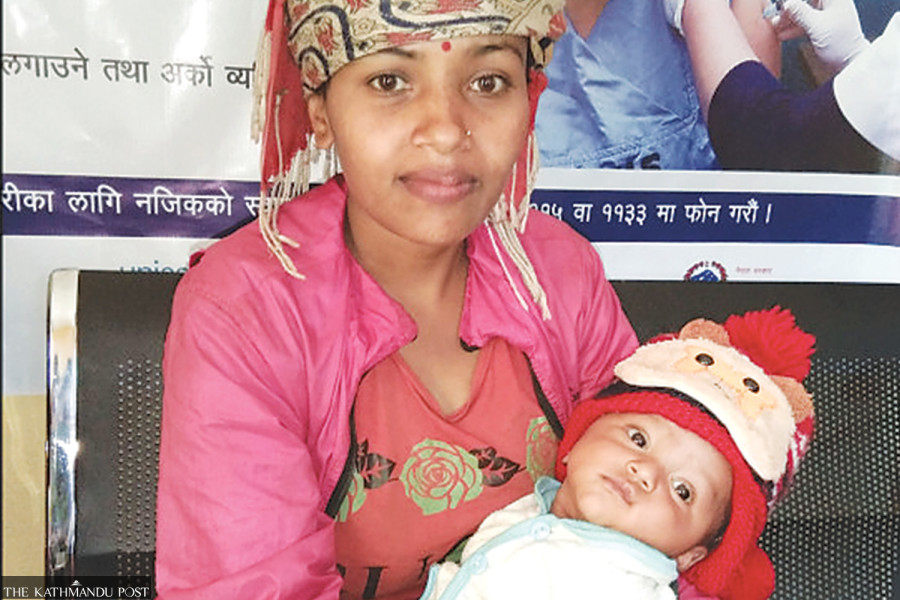National
Birthing centres in four mountain districts to have underfloor heating
Officials say the measure will help reduce postpartum, neonatal deaths due to hypothermia in high-altitude regions.
Post Report
The Ministry of Health and Population plans to install an underfloor heating system at birthing centres in four mountainous districts, aiming to lessen postpartum and neonatal deaths there.
Underfloor heating is a form of central heating that ensures indoor climate control for thermal comfort using an electrical heating cable installed underneath the flooring.
“Deaths of new mothers and newborn babies are high due to hypothermia [a condition that occurs when the body’s core temperature drops below 35°C] in the mountain regions,” said Dr Gauri Shrestha, chief of the Safe Motherhood Programme of the Family Welfare Division under the Department of Health Services. “We hope that floor heating systems at birthing centres will help in reducing these deaths.”
Neonatal deaths have not declined between 2016 and 2022, according to the Nepal Demographic and Health Survey-2022 carried out by the Ministry of Health and Population.
The report of the nationwide study shows that 21 children in every 1,000 live births die within a month. The figure was the same in 2016.
The government’s target for the Sustainable Development Goals was to reduce neonatal mortality to 16 deaths per 1,000 live births by 2022 and 12 in every 1,000 live births by 2030.
The SDGs, a follow-up on the Millennium Development Goals (MDGs), aim to end poverty, hunger, and all forms of inequality worldwide by 2030, and Nepal has committed to meeting the goals.
Likewise, the report shows that as of 2022, in every 100,000 live births, 151 women died from maternity-related complications in Nepal. Nepal reduced the maternal mortality rate from 539 per 100,000 births in 1996 to 239 per 100,000 births in 2016, for which the country even received a Millennium Development Goals award.
Every year, hundreds of women in the country succumb to preventable deaths, which include hypothermia, according to maternal health experts.
Officials at the Family Welfare Division said they have proposed allocating the required amount in the new budget for the upcoming fiscal year.
Floor heating systems will be set up in birthing centres of Solukhumbu, Tehrathum, Ramechhap and Sindhupalchok districts, Shrestha said. “This would be good to have in birthing centres of other districts as well but a slash in the health budget does not support an extension of the programme.”
The health ministry has decided to start several programmes, including a ‘special newborn care unit’, in all district hospitals nationwide to reduce newborn deaths.
For that, it has started training doctors, nurses and paramedics serving in the district hospitals.
Special newborn care units are general units designed to care for newborn children who fall ill shortly after birth. Doctors, nurses, and paramedics monitor ailing children admitted to the unit.
Similarly, several measures have been taken to curb maternal deaths, including the distribution of non-pneumatic anti-shock garments.
The non-pneumatic anti-shock garment is a low-cost first-aid device that limits persistent postpartum bleeding. The technology applies external pressure to a woman’s lower body to drive the blood flow upwards.
Experts say the device reduces blood flow to the uterus and treats hypovolemic shock, an emergency condition in which a severe loss of blood or other fluids makes the heart unable to pump enough blood to the body. The special suit can keep a woman with postpartum bleeding alive for up to 48 hours. Without the suit, the woman may bleed out within 30 minutes. The device buys critical time to transfer a patient to a healthcare facility and provide her treatment. It is also lightweight, washable and can be reused, officials said.
Excessive bleeding during or after childbirth is a major cause of maternal deaths in Nepal, which the authorities have been struggling to lessen for years. It is the largest direct cause of maternal mortality worldwide and is responsible for more than a quarter of the 300,000 estimated deaths each year.




 5.3200000000001°C Kathmandu
5.3200000000001°C Kathmandu






%20(1).jpg&w=300&height=200)






